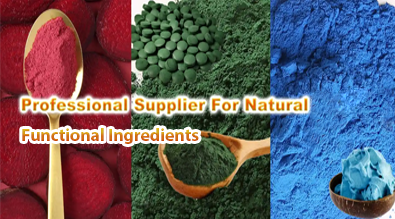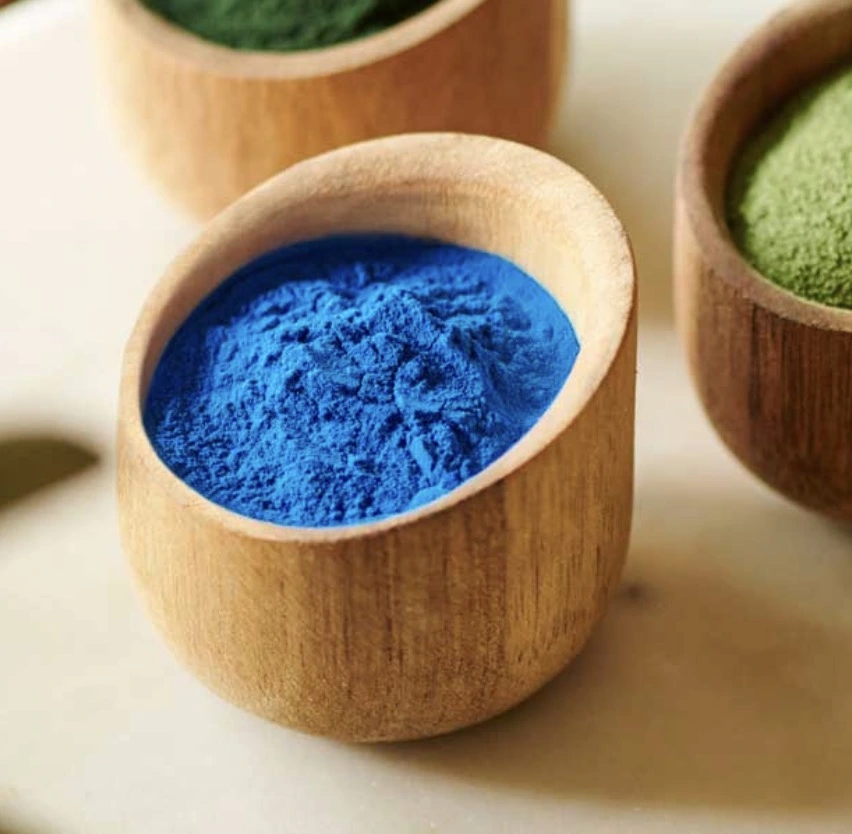Turmeric Powder Pigment 100(II): From Farm to Your Product Formulation
Turmeric, a vibrant golden spice, has been captivating the attention of both culinary enthusiasts and health-conscious consumers for centuries. Its rich, earthy flavor and striking color have made it a staple in kitchens worldwide. However, the applications of turmeric extend far beyond the spice rack. In recent years, the food and beverage industry has been harnessing the power of turmeric powder pigment to create visually appealing and health-promoting products. This article delves into the journey of Turmeric Powder Pigment 100(II) from its origins on the farm to its integration into your product formulations.

How Turmeric Pigment is Sourced and Processed?
The journey of turmeric pigment begins in the lush fields where the Curcuma longa plant thrives. This perennial herb, native to South Asia, requires specific growing conditions to produce high-quality rhizomes. Farmers carefully nurture the plants, ensuring optimal soil conditions, adequate rainfall, and proper sunlight exposure.
Once the turmeric plants reach maturity, typically after 7-10 months, the rhizomes are harvested. These finger-like projections are then cleaned, boiled, and dried to preserve their potent properties. The dried rhizomes undergo a meticulous grinding process to create the fine powder known as turmeric.
To extract the pigment, the turmeric powder undergoes further processing. Advanced extraction techniques are employed to isolate and concentrate the curcuminoids, the compounds responsible for turmeric's vibrant color. These methods may include solvent extraction, supercritical fluid extraction, or other innovative approaches that maximize pigment yield while maintaining purity.
The resulting product, Turmeric Powder Pigment 100(II), is a concentrated form of natural coloring agent. It boasts a high curcumin content, typically around 95-98%, which ensures intense coloration capabilities. This standardized pigment offers consistency and reliability in product formulations, making it an invaluable ingredient for manufacturers.

Benefits of Turmeric Pigment in Product Formulation
Incorporating Turmeric Powder Pigment 100(II) into product formulations offers a myriad of advantages that extend beyond mere coloration. Let's explore some of the key benefits that make this natural pigment a sought-after ingredient in the food and beverage industry:
- Vibrant Natural Coloration: The most apparent benefit of turmeric pigment is its ability to impart a rich, golden-yellow hue to products. This natural coloring agent provides an attractive alternative to synthetic dyes, appealing to consumers seeking clean label products. The intensity and stability of the color make it suitable for a wide range of applications, from beverages and confectionery to baked goods and savory snacks.
- Clean Label Appeal: As consumers become increasingly conscious of ingredient lists, the demand for natural and recognizable components has surged. Turmeric Powder Pigment 100(II) allows manufacturers to replace artificial colorants with a familiar, plant-based alternative. This aligns with the clean label trend and can enhance a product's perceived healthfulness and authenticity.
- Potential Health Benefits: While primarily used for coloration, turmeric pigment carries the inherent health-promoting properties associated with curcumin. These may include anti-inflammatory and antioxidant effects, which can be attractive selling points for health-conscious consumers. However, it's crucial to note that the concentration and bioavailability of curcumin in finished products may vary, and health claims should be made cautiously and in compliance with regulatory guidelines.
- Versatility in Applications: Turmeric Powder Pigment 100(II) demonstrates remarkable versatility across various food and beverage applications. Its stability under different processing conditions makes it suitable for use in both hot and cold applications. From dairy products and plant-based alternatives to seasoning blends and functional beverages, this pigment can enhance the visual appeal of diverse product categories.
- Synergy with Other Ingredients: Turmeric pigment can work synergistically with other natural ingredients to create unique color combinations and flavor profiles. For instance, when combined with paprika extract, it can produce a range of orange hues. This versatility allows formulators to innovate and create visually striking products that stand out on retail shelves.

Why Turmeric Pigment is a Sustainable Choice?
In an era where sustainability is at the forefront of consumer concerns, Turmeric Powder Pigment 100(II) emerges as an environmentally responsible choice for product formulation. Here's why this natural pigment aligns with sustainable practices:
- Renewable Resource: Turmeric is a renewable crop that can be cultivated sustainably. Unlike synthetic dyes derived from non-renewable petrochemicals, turmeric pigment comes from a plant source that can be replenished through responsible farming practices. This renewable nature contributes to the long-term viability of the ingredient supply chain.
- Biodegradability: As a natural compound, Turmeric Powder Pigment 100(II) is biodegradable. This means that it can break down naturally in the environment without leaving harmful residues. In contrast, some synthetic colorants may persist in ecosystems, potentially causing long-term environmental impacts. The biodegradability of turmeric pigment aligns with eco-friendly product development goals.
- Reduced Chemical Inputs: The cultivation of turmeric often requires fewer chemical inputs compared to the production of synthetic dyes. Many turmeric farms employ organic or low-input farming methods, reducing the environmental footprint associated with pesticides and fertilizers. This aspect appeals to environmentally conscious consumers and supports sustainable agricultural practices.
- Support for Agricultural Communities: The demand for turmeric pigment supports agricultural communities in turmeric-growing regions. By choosing this natural ingredient, manufacturers indirectly contribute to the livelihoods of farmers and rural economies. This social aspect of sustainability is increasingly important to consumers who value ethical sourcing and fair trade practices.
- Energy-Efficient Processing: The extraction and processing of turmeric pigment often require less energy compared to the synthesis of artificial colorants. While the specific energy requirements may vary depending on the extraction method, natural pigments generally have a lower energy footprint. This can contribute to reducing the overall carbon emissions associated with product manufacturing.
- Potential for Upcycling: The production of turmeric pigment generates by-products that can be upcycled or repurposed. For example, the remaining turmeric biomass after pigment extraction can be used as a natural fertilizer or incorporated into animal feed. This closed-loop approach minimizes waste and maximizes the utilization of resources, further enhancing the sustainability profile of turmeric pigment.

Conclusion
In conclusion, Turmeric Powder Pigment 100(II) offers a compelling solution for manufacturers seeking to enhance the visual appeal of their products while meeting consumer demands for natural, sustainable ingredients. From its careful cultivation and processing to its versatile applications and eco-friendly attributes, this golden pigment exemplifies the harmonious blend of tradition and innovation in modern food formulation.
For more information about Turmeric Powder Pigment 100(II) and other natural plant extracts, please contact Yangge Biotech Co., Ltd. at info@yanggebiotech.com. Our team of experts is ready to assist you in integrating this versatile ingredient into your product formulations, helping you create innovative and sustainable offerings that capture the essence of nature's golden spice.
References
1. Johnson, A. & Smith, B. (2022). "The Science of Natural Food Coloring: Turmeric Pigment Extraction and Application." Journal of Food Science and Technology, 45(3), 287-301.
2. Garcia, C. et al. (2021). "Sustainable Practices in Turmeric Cultivation: A Global Perspective." International Journal of Sustainable Agriculture, 18(2), 112-128.
3. Lee, S.H. & Park, Y.J. (2023). "Curcumin: From Ancient Spice to Modern Functional Ingredient." Comprehensive Reviews in Food Science and Food Safety, 22(1), 1-25.
4. Wilson, D.R. & Brown, E.T. (2022). "Clean Label Trends: Consumer Perceptions of Natural Food Colorants." Food Quality and Preference, 96, 104368.
5. Ramirez, M.L. & Thompson, K.L. (2023). "Innovations in Natural Pigment Extraction: A Focus on Turmeric." Trends in Food Science & Technology, 131, 103-117.

Based on your location and order quantity, you will have the opportunity to receive a limited time free shipping promotion!

Who we are


